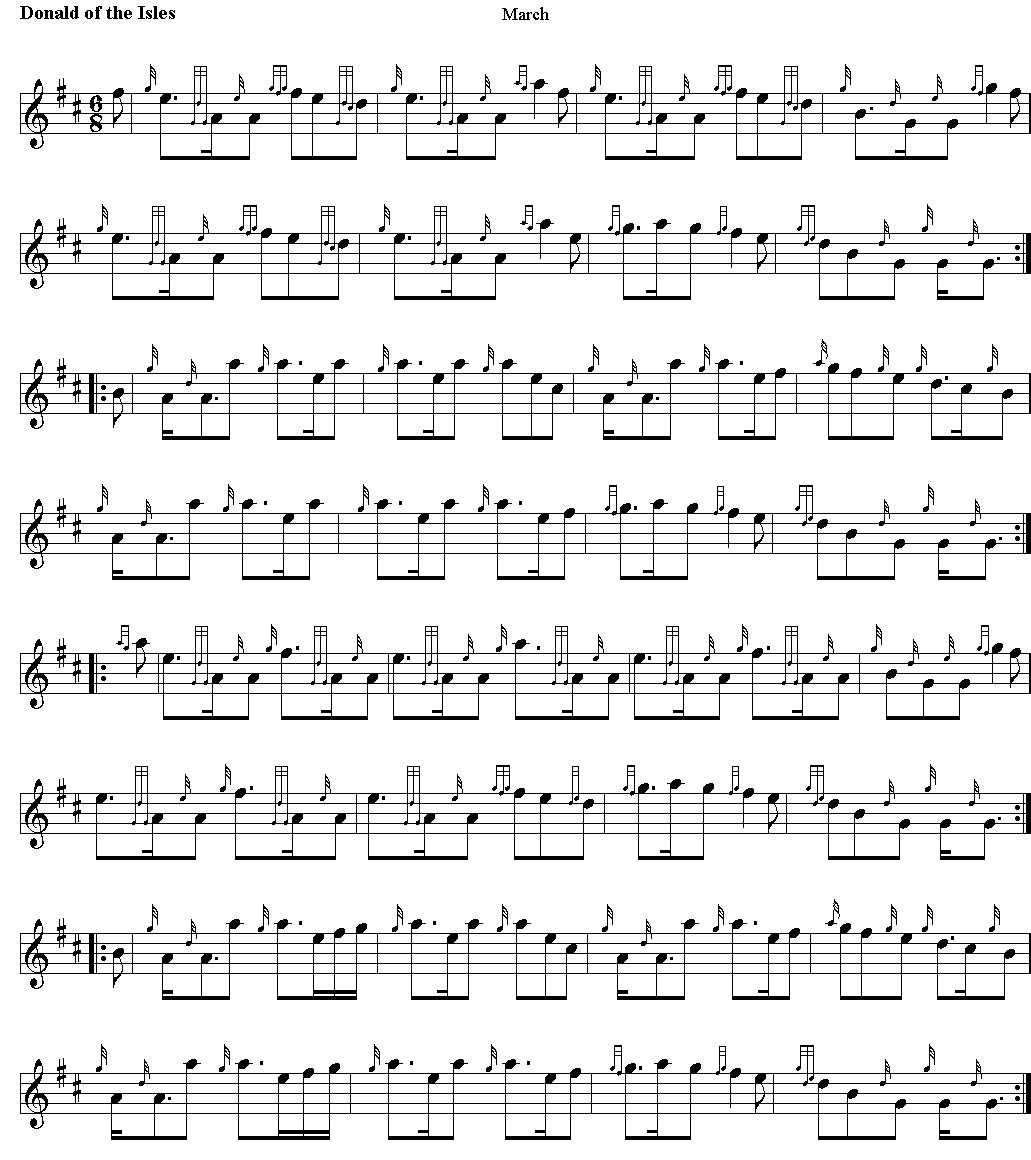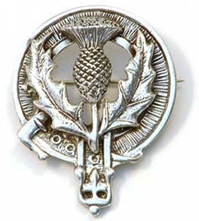|
Donald of the Isles refers to Donald, Lord of the Isles, son and
successor of John of Islay, Lord of the Isles and chief of Clan
Donald.
Donald (or Domhnall) of Islay lived from 1350 to 1423. Donald
inherited his father's titles in 1387 and spent the early years
of his tenure suppressing a revolt by his younger brother John
Mór who, with the support of the Macleans, was trying to expand
on his small inheritance of lands. By 1395 Donald had driven
John Mór into exile in Ireland and beaten off the challenge of
the Macleans.
Donald was
then able to turn his attention to the more serious problem
facing him. The Stewarts were very effective producers of
offspring, both legitimate and illegitimate, and this meant that
the family consumed more and more territory as one after another
of Robert II's children were granted titles and associated
lands. As a major landowner, and despite being Robert II's
grandson, Donald would have seen this as a growing threat.
Matters came
to a head over the Earldom of Ross, which controlled a vast
swathe of northern Scotland extending from the Isle of Skye to
Inverness, and therefore extended right along the northern flank
of Donald's territories. Partly to secure his northern flank,
Donald had married Mariota Leslie, sister of Alexander Leslie,
the Earl of Ross. But when Alexander died in 1402, Mariota's
claim to the Earldom was overlooked in favor of Alexander
Leslie's sickly young daughter, Euphemia.
By now
control of Scotland was nominally in the hands of Donald's
cousin, Robert III, who succeeded to the throne in 1390. He was
a deeply ineffective King, and the real power lay in the hands
of his ruthless and ambitious younger brother, Robert, Duke of
Albany. As soon as the young Euphemia inherited the Earldom of
Ross, Robert, Duke of Albany, who was the girl's grandfather,
took control of her and assumed the title of "Lord of the Ward
of Ross": clearly a step en route to taking over the title in
its entirety.
Robert, Duke
of Albany assumed personal control of Scotland on the death of
Robert III in 1406 as the latter's son, 12 year-old James I, was
a prisoner in England, where he would remain until 1424. Donald
responded by exchanging messages with both James I in captivity
and with Henry IV of England, presumably seeking their support
in an attack on Robert, Duke of Albany.
In Summer
1411 Donald, Lord of the Isles, gathered an army of 10,000 men
including MacIntoshes, Macleans, Macleods, Camerons and Chattans
as well as MacDonalds, and took control of the Earldom of Ross
by force. He then marched towards Aberdeen where forces were
being raised against him by Alexander Stewart, Earl of Mar, a
nephew by adoption of Robert, Duke of Albany. The two armies met
at the Battle of Harlaw on July 24, 1411, with Donald's 10,000
highlanders being confronted by around 2,000 better equipped men
under the Earl of Mar, most of whom were cavalry. At the end of
the day's fighting, Donald withdrew, having lost up to 1,000 of
his men: compared with the much larger proportionate losses of
600 suffered by the Earl of Mar.
It remains
open to debate who, if anyone, "won" the Battle of Harlaw. The
person who came out best was not actually present on the day.
After Donald withdrew his forces, Robert, Duke of Albany, was
able to proclaim the outcome as a triumph for the forces of
civilization over the barbarous highland hordes. He then led an
army to retake Ross unopposed. In 1415, he "persuaded" Euphemia
to relinquish the Earldom of Ross, which he awarded to his son,
John Stewart, the 2nd Earl of Buchan. Euphemia spent the rest of
her days in a nunnery.
In 1412,
Robert, Duke of Albany followed up his success in Ross with
preparations to invade the Lord of the Isles' heartland. He held
off doing so after Donald agreed to the terms of the Treaty of
Lochgilphead. No details of this remain, but it seems likely
that Donald was allowed to keep his existing lands, in return
for giving up any claim on the Earldom of Ross.
Robert, Duke
of Albany, died in 1420, and Donald, Lord of the Isles, died in
1423. Donald was succeeded his son, Alexander of Islay, who
became the third Lord of the Isles. Robert's death cleared the
main obstacle to the return of James I from captivity in
England, and James assumed the throne in 1424, his first act
being to wipe out the surviving Albany Stewarts, one effect of
which was to revert the Earldom of Ross to the Crown.

|



